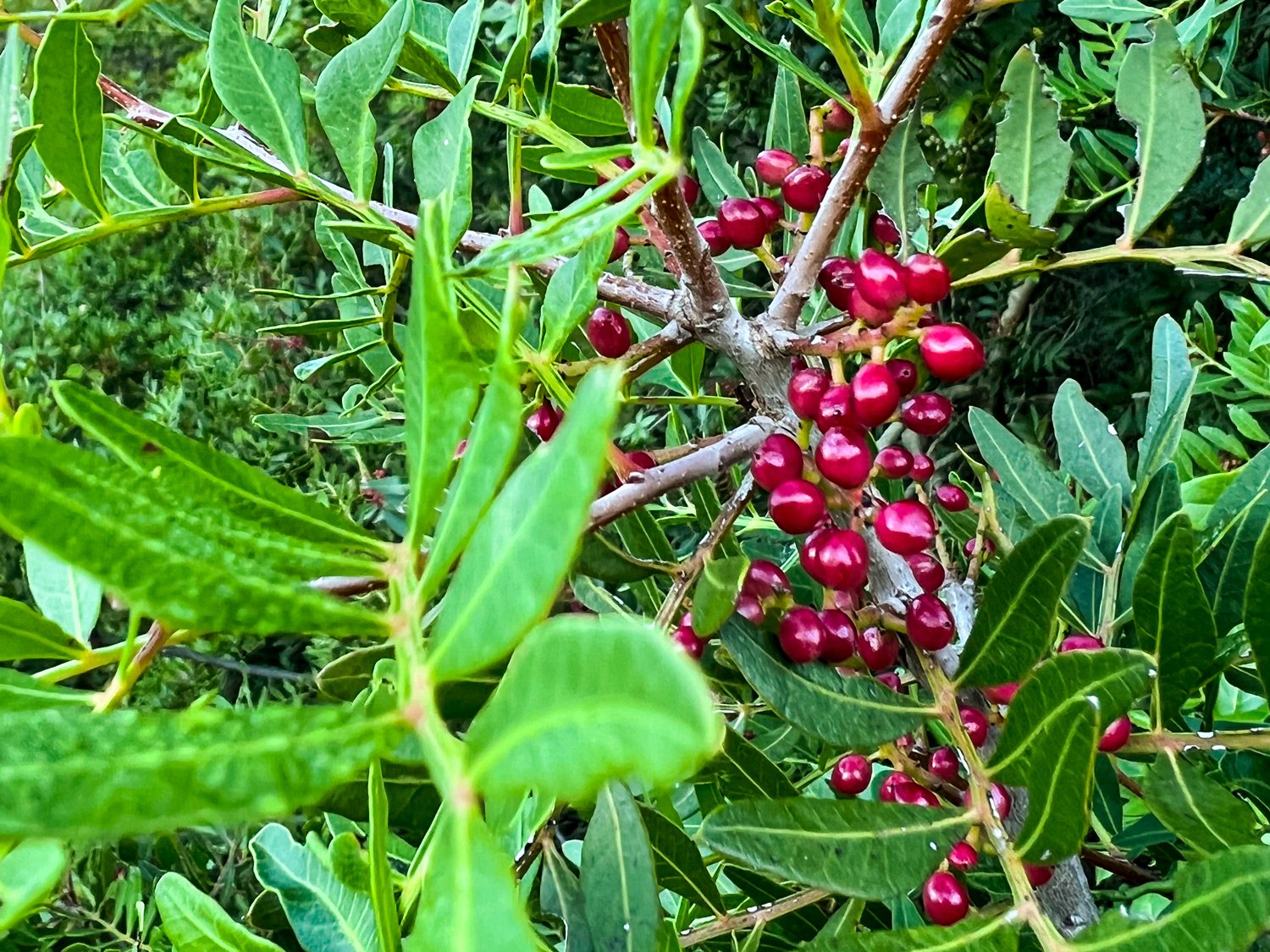This wonderfully omnipresent shrub grows quietly throughout the Mediterranean region. Easy to overlook, quiet and unassuming, tucked in among olive trees, myrtle, and coastal oak trees. It’s evergreen leaves are simple in their pointed oval shape; not too big, not too small. In the autumn small clusters of red berries appear turning almost black as the months roll by.
In the region, though, it’s a noble plant with a long history of use in flavorings and herbal remedies. The name, “mastic”, comes from the Greek word for chewing, “mastichien”. Scoring the bark releases the ivory-colored mastic resin, also called “Chios tears”, that is used as a flavoring for its strong, herbal-balsamic characteristic and for its gum qualities (chewing gum).
